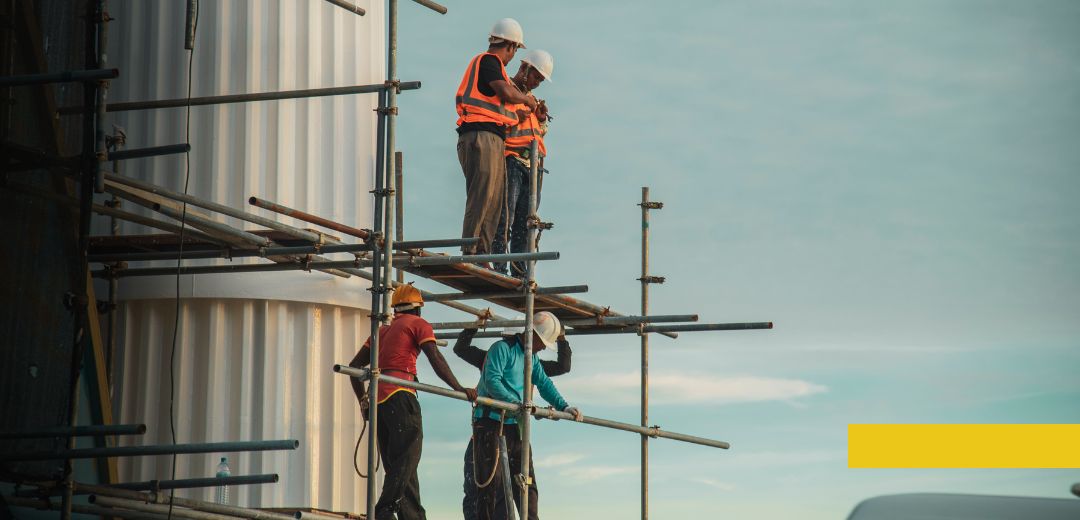The construction quantity takeoff is essential for the building and remodeling business. It utilizes the most commonly known method for judging and measuring all materials. Construction work employs many individuals within the activity. As a result, this becomes an essential loop toward pre-determining the cost and resource requirement of something. Takeoff estimating services form the very backbone of any building project.
On the other hand, manually organized construction quantity takeoff estimation can be time-consuming and prone to errors. In this case, construction quantity takeoff comes in handy. This general guide will discuss takeoff estimate services, why they are necessary, and how one selects the best for the project at hand—construction takeoff measures and records items to estimate cost. In any case, determining the quantity of items required to begin and complete the work is the first step in the evaluation process.
What to Include in Construction Quantity Takeoff?
A construction quantity takeoff estimate itemizes a project’s parts, costs, and quantities. Improvement takeoffs detail what, how much, and how it is viewed. Estimators note on an accounting sheet or in an analysis plan how each item was mentioned, how much was needed, and how much it cost.
Ways of Construction Quantity Takeoff
Here are two main ways of construction quantity takeoff:
- Manual Takeoff
Manual takeoff is initiated in construction and is carried out with big building projects. In the manual takeoff, the recruit’s assessor or the worker will review the framework and ensure each part is present. It will also discuss the type of material and other essential information, such as its length, volume, or area. After estimating each item from the above steps, the assessor shall provide a cost for each before arriving at the available price.
- Digital Takeoff
Here are a few reasons why computerized departure is better than manual trips. Modernized takeoffs start with adept development cost-surveying planning. Estimators can estimate expenses using construction quantity takeoff revision tools. Modernized takeoffs come in various stages of ease.
How Do You Select The Best Construction Quantity Takeoff?
- Precise construction quantity takeoff translates to a very successful and viable building project. The development of a construction project depends on the personnel of various departure groups, which also involves identifying the material requirements. There are numerous free takeoff expert centers from which you will require the best services for your project; this is rather challenging.
- Selecting the ideal construction quantity takeoff begins with understanding your work. This includes the building type, work level, and tools and people required. Have your takeoff expert organization keypad the necessary skills and experience to deliver attentive services by reviewing the project models.
- It is vital to select a guaranteed and licensed group. The provider’s licenses explain their expertise in safe takeoff. It is a cardinal point before choosing a professional group. Please inquire about other development organizations engaged in their services and how helpful and customer-centered they are. It will estimate the number of workers aboard and the time one spends at the expert center.
- Consider how home remodeling assignments are easy to obtain; the thing is, they require much planning and preparation. You need a takeoff expert center that can complete your work. It needs to include listening to demands and suggesting energizing actions.
Benefits of Selecting Construction Quantity Takeoff
Here are some of the benefits of selecting it:
- Proper planning is made achievable whenever one uses a prepared building takeoff service.
- How well a strategy works may be hard to gauge, especially when one has no experience. Such tools and knowledge of professional appraisal services boost this. Again, it would free the project owners from other high-level tasks.
- This is crucial as one can hire employees, bid on a building project efficiently, and make necessary arrangements. The check leaders of advancement enable the workers to make constructive bids. They help workers make a bid by explaining the work’s prices, the supplier’s cost, and the market dynamics.
- Building projects present many questions and dangers. This approach can reduce time and cost expenditures in the long run.
- Effective material utilization is essential as it reduces costs and makes products more acceptable to end-users. Good evaluators help supervisors make shifts, lower prices, and economize on waste. Quite similarly, they may recommend safe biological system alternatives that can be coordinated with prevailing fashion trends.
Tips for Using Construction Quantity Takeoff
Here are some of the top tips to improve the construction quantity takeoff for your project:
- Understand The Scope Of The Project And Specifications
Before starting a quantity takeoff, understand the project scope and the specifications. Study all relevant documents, including architectural plans, engineering drawings, and project specifications. Note the details of materials, dimensions, finishes, and special instructions/requirements by the client or project manager. Misinterpreting the project scope will lead to incorrect estimates, ensuring you iron out ambiguities before the takeoff commences.
- Takeoff with the Right Tools and Software
Gone are the days when manual takeoff processes were used, with software solutions replacing them to streamline quantity takeoff and improve accuracy. Tools like PlanSwift, Bluebeam, and Autodesk’s Revit are popular in construction. These programs allow you to digitize plans, do automatic calculations, and quickly take area, length, and volume measurements with a high degree of accuracy. Software use also minimizes human errors, accelerates the takeoff process, and updates estimates conveniently and almost effortlessly if the project scope or design alters.
- Break the Project Into Phases or Sections
Dividing the project into manageable phases or sections can help raise the accuracy of your takeoff. Usually, it is easier to break down the project by room, floor, or building section rather than estimate all quantities simultaneously. It will help you not miss any area and easily find discrepancies or possible mistakes. You should first make up your quantity takeoff for the foundation, then work on the framing, the walls, and so forth if you are working on a multi-story building. It helps the process be organizational and within a feasible capacity.
- Double-Check Unit Conversions and Measurements
Construction quantity takeoff’s most common error source is the wrong unit conversions or measurements. Different units exist on many construction projects, including square feet, cubic meters, and linear feet, and your measurements must be uniform and correct across the lines. Be very careful with materials such as concrete since volume is a critical factor. For example, considering that one must convert cubic feet to cubic yards, it may be overestimated or underestimated according to the space where the concrete should be placed; this may notably affect the cost of the work.
- Account for Waste and Loss
A construction project is seldom completed as planned; waste is often created. Whether material offcuts, spilled, or broken, you must allow for waste in your quantity takeoff. Different materials have different waste factors. A typical waste factor for materials like drywall or insulation is 10-15%. In contrast, for more valuable materials such as steel or concrete, a decent estimate could be 5%. Refer to industry standards or suppliers regarding the appropriate waste factor for each material.
- Allow for Labor Costs
While the crux of construction quantity takeoff is materials quantities, one must remember about accounting for labor. Depending on location, workforce skill level, and project complexity, material costs can range from very low to extremely high. Be sure your takeoff has a fine granular breakdown of the labor requirements throughout each phase of the project. It would also be wise to add overtime or delays that could increase labor costs. A complete labor estimate is what’s going to take you more realistically nearer to an estimated overall cost.
- Keep Your Estimates Current on Market Costs
Market conditions, supply chain interruptions, and seasonal lows or highs can drive costs up or down. Pay attention to material price changes and regularly update your estimates to maintain the accuracy of your quantity takeoff. Establishing links with suppliers for more accurate price information and negotiating discounts for bulk purchases is also good.
- Cross-Check with Historical Data
If you have previously executed similar projects, historical data provides a good benchmark upon which you can cross-check your current quantity takeoff. You may compare quantities, materials, and labor costs against previous projects to ensure consistency in the estimates. Using historical data might provide valuable insight into where the disparities lie in the quantities or what should be given closer scrutiny.
- Ask for Other Team Members’ Support
Quantity takeoff is commonly supported when the estimators work in a team setting; sometimes, there is assistance from colleagues, project managers, and engineers. Do not hesitate to ask colleagues for their feedback if you need clarification on specific projects that appear too complicated or out of your comfort zone. The collaboration will also ensure that every detail is included and that both p, parties are on the same page about project requirements and estimates.
- Review and Revise Your Takeoff
Finally, reviewing and revising your construction quantity takeoff is very important before finishing the estimate. Review your measurements, unit conversions, material quantities, and labor costs. Let another cast member review the takeoff to avoid possible mistakes or inconsistencies. Later, after you are pretty sure about the accuracy of your takeoff, you can perform the cost estimation and budgeting for the project.
Conclusion
Quantity takeoff is crucial to the success of any construction. The different open groups of takeoff vary, and each has merits and cons. Having an appropriate business of takeoff specialists is critical to any development job. Every builder needs to invest in a good construction quantity takeoff company like Digital Estimating for the future.


